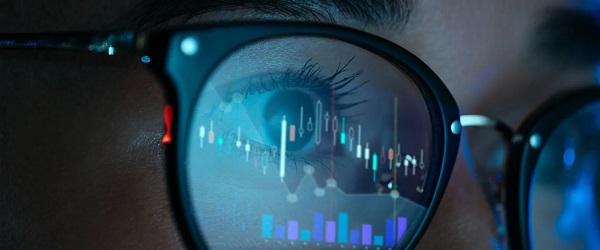Fraser Institute
Federal government should reject Bloc plan—and raise OAS age of eligibility

From the Fraser Institute
By Ben Eisen
Recently, the House of Commons passed a private member’s bill by the Bloc Quebecois to increase Old Age Security (OAS) payments for younger seniors (aged 65-74) by 10 per cent. OAS provides cash benefits for most seniors in Canada, except seniors with very high incomes.
The bill, however, requires the support of Trudeau’s cabinet, which has so far refused to grant a “royal recommendation” that would allow the bill to become law. And that’s the right call. In fact, the government should go further and raise the age of eligibility for OAS.
Here’s why.
Governments should always be cautious with taxpayer money and strive to direct financial assistance to those actually in need. It’s hard to think of a worse strategy to achieve this goal than increasing OAS benefits for seniors who are a relatively high-income demographic. In fact, the share of seniors living in “low-income” is only about half of that for the working-age population. It may be a good idea to increase targeted assistance for the small number of seniors that struggle financially, but spraying almost the entire demographic with a firehose of scarce taxpayer funds is difficult to justify on equity grounds.
The idea also flies in the face of the Trudeau government’s promise in its last budget to work for “generational fairness” and help make the economy work better for younger Canadians who face a housing crisis and low youth employment rates among other economic challenges.
Why? Because any increase to OAS benefits would be deficit-financed (that is, the government would need to borrow the money) and the cost would fall on the shoulders of working-age Canadians who must pay the interest on the resulting debt. In other words, boosting the OAS would be a massive income transfer from younger Canadians to older Canadians.
Again, instead of boosting benefits for younger seniors—like the Bloc has proposed, with support from Conservatives and the NDP—the federal government should go in exactly the opposite direction and increase the age of eligibility for OAS.
Simply put, people are living longer than when the program was first designed. And not just here at home but around the world, which is why there’s a clear international trend in increasing the age of eligibility for old-age benefit programs. According to our analysis in 2022, among 22 high-income OECD countries, 16 had either already increased the age of eligibility for public retirement programs above the age of 65 or were in the process of doing so. Several countries have also indexed the age of eligibility to life expectancy, to help prevent costs from spiralling out of control.
Canada was once on track to participate in this sensible international trend when the Harper government announced a plan to raise the OAS eligibility age from 65 to 67 (while giving ample lead time before the change to not disrupt the financial planning of Canadians nearing retirement). The Trudeau government reversed this decision (at great financial cost) in 2016 almost immediately after taking office. But now, the government would be well-advised to revisit the plan and raise the age of eligibility to 67, for the same reasons it’s reluctant to approve the Bloc’s motion and increase payments to younger seniors.
Ensuring income security for older Canadians is an important policy goal. But it’s equally important to achieving this goal in a way that does not unfairly burden working-age Canadians and directs money where it’s needed most.
Author:
Business
Massive government child-care plan wreaking havoc across Ontario

From the Fraser Institute
By Matthew Lau
It’s now more than four years since the federal Liberal government pledged $30 billion in spending over five years for $10-per-day national child care, and more than three years since Ontario’s Progressive Conservative government signed a $13.2 billion deal with the federal government to deliver this child-care plan.
Not surprisingly, with massive government funding came massive government control. While demand for child care has increased due to the government subsidies and lower out-of-pocket costs for parents, the plan significantly restricts how child-care centres operate (including what items participating centres may purchase), and crucially, caps the proportion of government funds available to private for-profit providers.
What have families and taxpayers got for this enormous government effort? Widespread child-care shortages across Ontario.
For example, according to the City of Ottawa, the number of children (aged 0 to 5 years) on child-care waitlists has ballooned by more than 300 per cent since 2019, there are significant disparities in affordable child-care access “with nearly half of neighbourhoods underserved, and limited access in suburban and rural areas,” and families face “significantly higher” costs for before-and-after-school care for school-age children.
In addition, Ottawa families find the system “complex and difficult to navigate” and “fewer child care options exist for children with special needs.” And while 42 per cent of surveyed parents need flexible child care (weekends, evenings, part-time care), only one per cent of child-care centres offer these flexible options. These are clearly not encouraging statistics, and show that a government-knows-best approach does not properly anticipate the diverse needs of diverse families.
Moreover, according to the Peel Region’s 2025 pre-budget submission to the federal government (essentially, a list of asks and recommendations), it “has maximized its for-profit allocation, leaving 1,460 for-profit spaces on a waitlist.” In other words, families can’t access $10-per-day child care—the central promise of the plan—because the government has capped the number of for-profit centres.
Similarly, according to Halton Region’s pre-budget submission to the provincial government, “no additional families can be supported with affordable child care” because, under current provincial rules, government funding can only be used to reduce child-care fees for families already in the program.
And according to a March 2025 Oxford County report, the municipality is experiencing a shortage of child-care staff and access challenges for low-income families and children with special needs. The report includes a grim bureaucratic predication that “provincial expansion targets do not reflect anticipated child care demand.”
Child-care access is also a problem provincewide. In Stratford, which has a population of roughly 33,000, the municipal government reports that more than 1,000 children are on a child-care waitlist. Similarly in Port Colborne (population 20,000), the city’s chief administrative officer told city council in April 2025 there were almost 500 children on daycare waitlists at the beginning of the school term. As of the end of last year, Guelph and Wellington County reportedly had a total of 2,569 full-day child-care spaces for children up to age four, versus a waitlist of 4,559 children—in other words, nearly two times as many children on a waitlist compared to the number of child-care spaces.
More examples. In Prince Edward County, population around 26,000, there are more than 400 children waitlisted for licensed daycare. In Kawartha Lakes and Haliburton County, the child-care waitlist is about 1,500 children long and the average wait time is four years. And in St. Mary’s, there are more than 600 children waitlisted for child care, but in recent years town staff have only been able to move 25 to 30 children off the wait list annually.
The numbers speak for themselves. Massive government spending and control over child care has created havoc for Ontario families and made child-care access worse. This cannot be a surprise. Quebec’s child-care system has been largely government controlled for decades, with poor results. Why would Ontario be any different? And how long will Premier Ford allow this debacle to continue before he asks the new prime minister to rethink the child-care policy of his predecessor?
Banks
Scrapping net-zero commitments step in right direction for Canadian Pension Plan

From the Fraser Institute
By Matthew Lau
And in January, all of Canada’s six largest banks quit the Net-Zero Banking Alliance, an alliance formerly led by Mark Carney (before he resigned to run for leadership of the Liberal Party) that aimed to align banking activities with net-zero emissions by 2050.
The Canada Pension Plan Investment Board (CPPIB) has cancelled its commitment, established just three years ago, to transition to net-zero emissions by 2050. According to the CPPIB, “Forcing alignment with rigid milestones could lead to investment decisions that are misaligned with our investment strategy.”
This latest development is good news. The CPPIB, which invest the funds Canadians contribute to the Canada Pension Plan (CPP), has a fiduciary duty to Canadians who are forced to pay into the CPP and who rely on it for retirement income. The CPPIB’s objective should not be climate activism or other environmental or social concerns, but risk-adjusted financial returns. And as noted in a broad literature review by Steven Globerman, senior fellow at the Fraser Institute, there’s a lack of consistent evidence that pursuing ESG (environmental, social and governance) objectives helps improve financial returns.
Indeed, as economist John Cochrane pointed out, it’s logically impossible for ESG investing to achieve social or environmental goals while also improving financial returns. That’s because investors push for these goals by supplying firms aligned with these goals with cheaper capital. But cheaper capital for the firm is equivalent to lower returns for the investor. Therefore, “if you don’t lose money on ESG investing, ESG investing doesn’t work,” Cochrane explained. “Take your pick.”
The CPPIB is not alone among financial institutions abandoning environmental objectives in recent months. In April, Canada’s largest company by market capitalization, RBC, announced it will cancel its sustainable finance targets and reduce its environmental disclosures due to new federal rules around how companies make claims about their environmental performance.
And in January, all of Canada’s six largest banks quit the Net-Zero Banking Alliance, an alliance formerly led by Mark Carney (before he resigned to run for leadership of the Liberal Party) that aimed to align banking activities with net-zero emissions by 2050. Shortly before Canada’s six largest banks quit the initiative, the six largest U.S. banks did the same.
There’s a second potential benefit to the CPPIB cancelling its net-zero commitment. Now, perhaps with the net-zero objective out of the way, the CPPIB can rein in some of the administrative and management expenses associated with pursuing net-zero.
As Andrew Coyne noted in a recent commentary, the CPPIB has become bloated in the past two decades. Before 2006, the CPP invested passively, which meant it invested Canadians’ money in a way that tracked market indexes. But since switching to active investing, which includes picking stocks and other strategies, the CPPIB ballooned from 150 employees and total costs of $118 million to more than 2,100 employees and total expenses (before taxes and financing) of more than $6 billion.
This administrative ballooning took place well before the rise of environmentally-themed investing or the CPPIB’s announcement of net-zero targets, but the net-zero targets didn’t help. And as Coyne noted, the CPPIB’s active investment strategy in general has not improved financial returns either.
On the contrary, since switching to active investing the CPPIB has underperformed the index to a cumulative tune of about $70 billion, or nearly one-tenth of its current fund size. “The fund’s managers,” Coyne concluded, “have spent nearly two decades and a total of $53-billion trying to beat the market, only to produce a fund that is nearly 10-per-cent smaller than it would be had they just heaved darts at the listings.”
Scrapping net-zero commitments won’t turn that awful track record around overnight. But it’s finally a step in the right direction.
-

 COVID-191 day ago
COVID-191 day agoOntario man launches new challenge against province’s latest attempt to ban free expression on roadside billboards
-

 Energy1 day ago
Energy1 day agoThis Canada Day, Celebrate Energy Renewal
-

 Alberta24 hours ago
Alberta24 hours agoAlberta Next Takes A Look At Alberta Provincial Police Force
-

 Alberta1 day ago
Alberta1 day agoCanadian Oil Sands Production Expected to Reach All-time Highs this Year Despite Lower Oil Prices
-

 Business1 day ago
Business1 day agoPotential For Abuse Embedded In Bill C-5
-

 International1 day ago
International1 day agoPresident Xi Skips Key Summit, Adding Fuel to Ebbing Power Theories
-

 Business2 days ago
Business2 days agoEurope backs off greenwashing rules — Canada should take note
-

 Business24 hours ago
Business24 hours agoMassive government child-care plan wreaking havoc across Ontario







